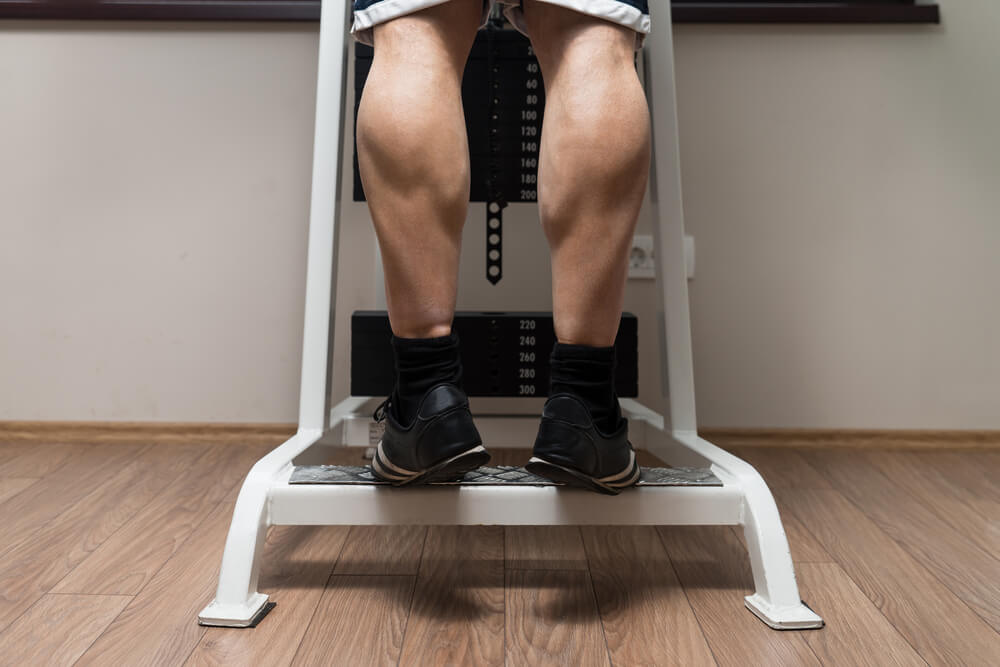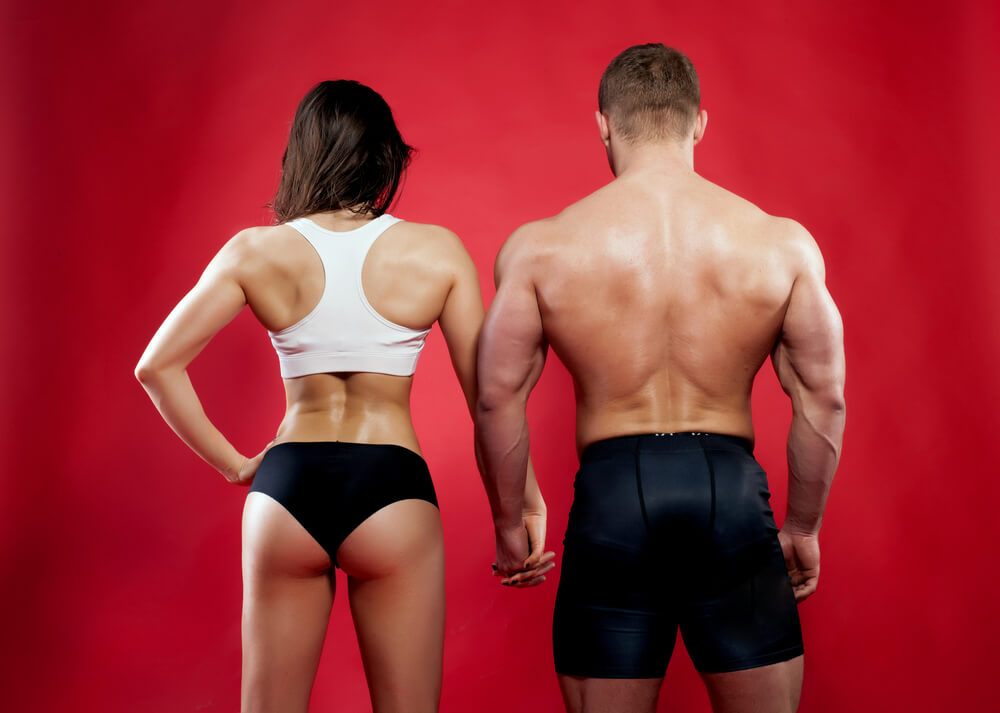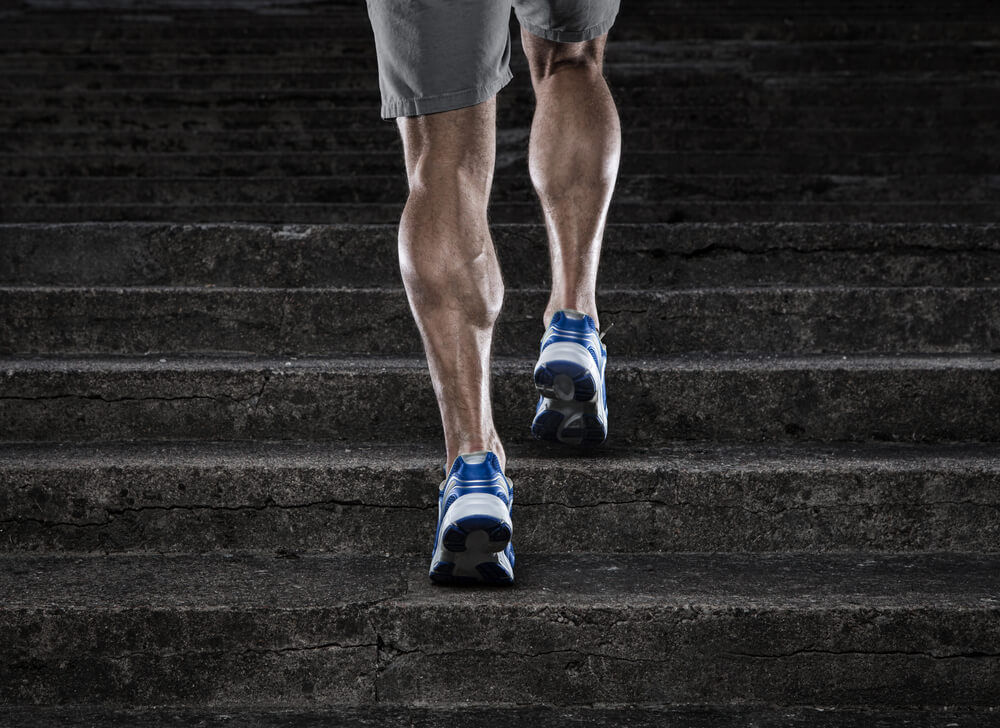You hit the gym hard whenever you go. You blast your upper body and you feel the burn on leg days. You notice that your calves are small and ask yourself is donkey calf raises the answer?
When you look in the mirror, what is one area that just never seems to get an adequate amount of attention?
Your calves.
This is an area most people struggle with. It’s not because you don’t try, but instead, because there aren’t all that many options available.
Sure, there is the classic calf raise, which you can do on a standing squat machine or at home while holding dumbbells, but this only does so much. If you want to really blast your calves and define these important leg muscles, you’ll need a move specially designed to target and annihilate the fibers if your calves. Donkey calf raises do exactly that.
Now, you’ll need a specific piece of equipment (or at the very least, a second person), but if you’re looking to boost size and strength, this is the move for you.
We’ll show you exactly how to do it to maximize your effort.
Muscles Hit When Performing the Donkey Calf Raises
This move exclusively targets your calf muscles.
You’re not going to hit any other muscle area (although you may touch on a few stabilizer muscles, depending on the way you perform your lift), so this is the perfect kind of lift to end your leg day on.
The calf muscle on the back of your lower leg is not just a single muscle though. Much like your bicep, it is made up of two individual muscles. The first is known as the gastrocnemius. The is the large muscle that creates the bulge of your calf. The muscle itself is then broken down into different heads. Donkey calf raises work both heads evenly, so you don’t need to worry about shifting your feet during the exercise (although you can, if you want to target one of the heads over the other).
The second muscle in the calf is called the soleus. This is a small, flat muscle that is located under the gastrocnemius. It runs from your knee cap down to your ankle and provides added stability in holding the main muscle in place (WebMD, 2014).
How to Use the Donkey Calf Raise Machine
Even if you go to a gym with an abundance of workout equipment, there’s no guarantee the donkey calf raise machine will be present.
This isn’t necessarily the most popular leg machine. In fact, if you haven’t noticed already, there likely are not all that many lower body machines to begin with.
However, if you see someone on a machine doing what looks like part yoga pose and part odd leg lift, you’ve found what you’re looking for.
The donkey calf raises machine has a standing strip with a grip attached to it, which is very similar to what you’ll find on a traditional calf raise machine. You’ll want to position your backside to the weights and grab hold of the handle matt in front of you. A padded bumper will extend above you and should rest right on your lower back, directly above your butt.
Essentially, with this lift, you’re completely taking your upper body out of the lift. Instead, all of the weight is positioned on your lower back, which in this position, is directly in line with your legs.
While in position, push yourself up onto your toes and hold the highest position for at least a single count (stick with one count if you haven’t done the donkey calf raise in a while/before and then push to a two count after a few weeks).
Slowly lower yourself back down until the heel of your foot is below the foot pad. Hold this for a two count.
One of the great aspects of using a machine (or at least performing calf lifts on an elevated surface) is you stretch the muscle fibers in two different ways. The more of a stretch you perform, the greater the tears in your muscle fibers and the more size you’ll eventually put on.
After the two count in the bottom position, you’ll complete your first rep (we’ll get into desired sets and reps in a bit).
The Partner Lift
How close are you with your training partner?
Well, you’re about to get a whole lot closer. If you workout at home or your gym doesn’t have the necessary equipment, yet you’re dead set on performing the donkey calf raises, you’ll want to bring in your lifting partner.
You’ll still want some sort of elevated surface to place your feet on (ideally) as it maximizes your downward stretch. If there’s nothing to stand on consider standing on a set of 45-pound plates. You’ll also want something to rest your hands on for balance and leverage, but you can likely use the back of an adjustable bench.
This is where things are going to get…interesting…with you and your workout partner (don’t say we didn’t warn you).
It might feel strange initially, but eventually, that awkwardness will pan out. Because you don’t have the machine, which places the weight directly on your lower back, you’ll want your workout partner to straddle your hips, as if they are going to ride you like a horse, or, yes, a donkey. This places the weight in the right location, at which point you’ll perform the same calf raise as explained earlier.
You won’t have as much leeway with the weight to work with (and if the person you’re with is already self-conscious about his or her weight, maybe it’s best to not do this…as not being able to lift them might lead to a really awkward car ride home), but in a pinch, this is a fine way to do it.
Weighted Donkey Calf Raise
Alright, so let’s say your gym doesn’t have the actual machine and you either don’t have a lifting partner, aren’t comfortable with doing the straddling lift with your current partner, or that girl on the other side of the gym has threatened to report you to management if you don’t stop asking her to do it.
If after all that you’re still wanting to perform the weighted donkey calf raise there is still a third option. To do this you’ll need a loaded dipping belt. If you are unfamiliar with this kind of built it looks much like a traditional squat/clean belt, only there is a chain attachment on the front of it that hangs down with a metal bar attached to it.
This attachment allows you to slide plate weights onto it. In this method, the weight will dangle in front of you instead of being placed on top of you, but the process is more or less the same (although you will feel more constant pressure on your lower back area, so if you struggle with lower back pain this is not the right lift for you).
As you should do with the other lifting options, find an elevated platform (or weights) to stand on and lead forward on a bench for support and balance.
From here, you can perform the same lift as you would with either of the other methods.
Foot Position For Donkey Calf Raises
Traditionally, you’ll keep your feet straight and your ties pointed to the wall in front of you. This hits your entire calf muscle evenly.
However, what happens when you want to target a specific area?
You’ll need to shift the way you’re standing. It works much in the same way as other calf raising exercises.
If you’re interested in working the inner portion of your calf muscle (this is the medial gastrocnemius), you’ll want to point your feet outward, as if you’re going to click your heels together and tell the world there’s no place like home (sparkly red slippers not required). If you want to work the exterior of your calf muscle (the lateral gastrocnemius), you’ll want to point your toes inward.
How Much and Routine
As stated earlier, you’ll want to slide this lift into the end of your leg day routine.
It works arguably the smallest muscles in your lower body and thus should come after all of your major legwork.
Thankfully, you won’t hit your hamstrings or quads, so even after blasting away on this area of the body, you won’t feel it (which allows you to put in your full effort on the calf muscles).
If you’re going for sheer size, shoot for two to three sets of four reps each.
You want to go as heavy as you can.
However, the form is also important. You need to be able to go up completely on your toes during the lift. If you can’t go all the way up the weight is too heavy and you’re not maximizing your stretch. Maximizing your stretch here is far more important than heavier weight. If after the first set you’re able to pump out four reps, increase the weight for the next set.
The other reason why you’d want to focus on calf muscles (outside of not having spaghetti legs) is to build endurance.
You’ll want strong calf muscles if you’re an endurance runner or even a dancer.
When this is the case it is more about the number of reps you do instead of going for extremely heavyweights. So, start with a weight you can do around 20 times. If you’re able to squeeze off 20 reps, increase the weight for the second set. On the third set, just do as many as you can until failure.
There is a fourth optional set you can do. If you’re going for endurance, keep the weight as-is. If you’re going for size, reduce the weight. Now, perform half-raises. Because your calf muscles are likely already fried, you won’t be able to lift all the way up any longer. The half-raises helps completely finish off your calves. Do as many of this lift as you can until you just can’t lift anymore. Push through the burn (because you’ll really feel it) until you physically can’t lift it at all.
Just a word to the wise: even if you’ve been doing traditional calf raises, you’re really going to feel this tomorrow and the day after.
Who Should and Shouldn’t Increase the Donkey Calf Raises
Most of your body’s power comes from your quads, hamstrings, and booty. However, that doesn’t mean you never use your calf muscles. These are key muscles when building endurance for running, playing soccer and other longer, cardio exercises (including bicycling). Stronger calf muscles help boost your endurance and can help with your other lower body lifts as well (similar to stronger biceps helping improve your squat).
With that said, most people should include the donkey calf raise into their workout. However, it may come down to what kind of shape their back is in. If you have a bad back, the position you’re in throughout the lift and the kind of weight you put on your lower back is not desirable, so you should generally avoid performing this kind of lift. However, if you don’t have lower back problems, you’re the perfect candidate for a donkey calf raise.
Conclusion
Chances are, you’re not hitting your calf muscles as much as you should. This area of the body is often forgotten and doesn’t receive the same kind of attention as your thighs or butt, and certainly not as much as your upper body.
Thankfully, you don’t need to get crazy with the kinds of lifts you do with your calf muscles. In reality, you can perform one or two different raises and you’ll really torch the muscle fibers. Best of all, by switching up the way you stand, you can target the exact area of the muscle you’d like.
So, if you haven’t added a donkey calf raise to your lower leg day yet, now is the right time to do it.
-Terry Asher
Terry Asher
Latest posts by Terry Asher (see all)
- Better Family – Product Review Liquid Daily 2 oz - Dec 16, 2024
- Post-Workout Recovery: The Key to Optimal Performance - Nov 25, 2024
- Pre-Workout Supplements – Everything You Need To Know - Nov 18, 2024













[…] via- https://gymjunkies.com/donkey-calf-raises/ […]
[…] great way to finish leg day and helps ensure you still target your calf muscles. With the standing calf raises all you need is a slightly elevated surface, such as a stair or a […]